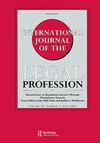A five-year gender equality score card for the Philippine Supreme Court under its first woman Chief Justice: opportunities seized and missed
IF 0.9
Q2 LAW
International Journal of the Legal Profession
Pub Date : 2020-05-03
DOI:10.1080/09695958.2019.1646655
引用次数: 0
Abstract
ABSTRACT On 24 August 2012, the Honourable Maria Lourdes Sereno was appointed Chief Justice of the Philippine Supreme Court, the first woman to hold such position since its establishment in 1901. Several cases involving important women’s issues decided during her term were reviewed in this work, inspired by the possibility that a young, brilliant and hardworking woman of humble beginnings sitting at the helm could make a difference. Indeed, the Chief Justice manifested commendable grit in registering meaningful dissent in Imbong v. Ochoa, where she championed women’s bodily autonomy, and when she wrote a provocative concurrence in Vinuya v. Romulo, where she gave hope to women who suffered wartime atrocities. However, she missed an opportunity to put the rape shield law into good use in deciding People v. Batuhan and Lacturan. Her concurrence was also disappointing in Garcia v. Drilon, where she favoured rational basis review over intermediate level of scrutiny for gender-based classification, in People v. Jumawan where a conviction for marital rape was based on romantic paternalism, in People v. Palotes where additional compensatory damages were not considered for a rape victim who bore a child, in People v. Tionloc where acquittal was based on rape myths, and in People v. Caoili where the Court refused to call rape by its ugly name.菲律宾最高法院在首位女性首席大法官领导下的五年性别平等记分卡:抓住和错过的机会
摘要2012年8月24日,尊敬的Maria Lourdes Sereno被任命为菲律宾最高法院首席大法官,这是自1901年菲律宾最高法院成立以来首位担任该职位的女性。这项工作回顾了她任期内决定的几个涉及重要妇女问题的案件,灵感来自一位出身卑微的年轻、聪明、勤奋的女性掌舵可能会产生影响。事实上,首席大法官在Imbong诉Ochoa一案中表现出了值得赞扬的勇气,她在该案中支持女性的身体自主,并在Vinuya诉Romulo一案中写下了挑衅性的赞同书,她给遭受战争暴行的女性带来了希望。然而,她错过了一个机会,在人民诉巴图汉和拉图兰案的判决中充分利用强奸保护法。在Garcia诉Drillon案中,她的同意也令人失望,在该案中,她倾向于对基于性别的分类进行理性基础审查,而不是中等程度的审查;在People诉Jumawan案中,婚内强奸罪的定罪是基于浪漫的家长作风,在People v.Palotes案中,对生育孩子的强奸受害者不考虑额外的赔偿。在Tionloc案中,无罪判决是基于强奸神话,在People v.Caoili案中,法院拒绝称强奸为丑陋的名字。
本文章由计算机程序翻译,如有差异,请以英文原文为准。
求助全文
约1分钟内获得全文
求助全文

 求助内容:
求助内容: 应助结果提醒方式:
应助结果提醒方式:


